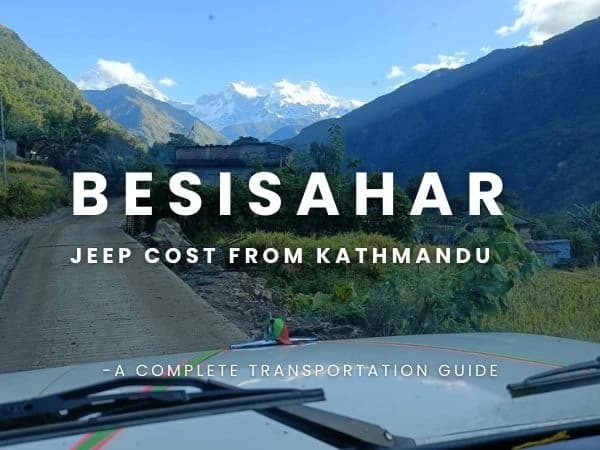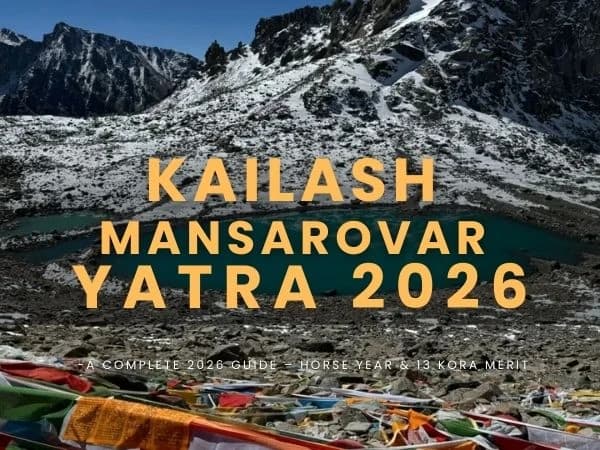Below, we have mentioned the 7 UNESCO World Heritage Sites in Kathmandu that are must-visit places for travelers. All these monuments are steeped in Nepal's brave history and cultural and archeological richness.
Do note that foreigners need separate permits to enter all these sites. If you join our Kathmandu Day Tour package, then our guide will take care of all the permits. Make sure to ask permission or look for any prohibited signs before taking pictures.
Likewise, do not litter the monuments and open your shoes before entering any temples, shrines, or monasteries. Be respectful to the locals and their cultural sentiments.
1) Swayambhunath Temple - The Famous Monkey Temple:

Swayambhunath temple is popularly known as the Monkey Temple. It is perched on a hilltop on the western outskirts of Kathmandu. The fact that the origin of this temple is still shrouded in myth and legend makes it even more fascinating.
As per the Buddhist tradition, the stupa is believed to have emerged spontaneously from a primordial lake that once covered the Kathmandu Valley. However, archaeological evidence suggests the Swayambhunath temple has been a religious center for over 2,000 years.
The first stupa is believed to be built by the emperor Ashoka in the 3rd century but was later destroyed. But, the current stupa is built around the 5th century. Today, Swayambhunath temple is a pilgrimage site for both Buddhists and Hindus.
The temple represents an enlightened mind. The whitewashed dome-shaped stupa is the main temple. It is surrounded by many small stupas, statues, and prayer wheels. Visitors must climb 365 steps to reach the top of the hill where the temple is located.
The entire temple complex is home to numerous monkeys, which are considered sacred by the locals. Hence, it got the name Swayambhunath temple.
2) Boudhanath Stupa - The Largest Stupa in Nepal

Boudhanath Stupa is an iconic landmark in Kathmandu. It is the largest stupa in Nepal and the main religious center for Tibetan Buddhism. The Boudhanath Stupa history goes back between the 6th and 8th centuries- the stupa is believed to have been built between this time.
Like Swayambhunath, the Boudhanath Stupa also has a whitewashed dome with a tiered spire. The all-seeing eyes on every side of the stupa are believed to protect the Kathmandu Valley from evil.
The stupa's base is lined with prayer wheels that devotees spin, reciting mantras while circumambulating. Around the stupa, there are numerous monasteries, hotels, cafes, and shops.
3) Pashupatinath Temple - A Significant Pilgrimage Site for Hindus in Nepal:

Pashupatinath temple is the major pilgrimage site for Hindus in Nepal. It is dedicated to Lord Shiva. The temple dates back to the 4th century. As per one of the legends, the temple's origin begins when Shiva and Parvati transform into antelopes on the bank of the Bagmati River.
The Pashupatinath temple is built on the bank of the holy Bagmati river. The earliest documents show that the temple structure was built by the Licchavi kings, who ruled Nepal from the 4th to the 8th centuries. The current pagoda-style main temple was built between the 15th and 16th centuries.
Thousands of pilgrims visit this holy temple every year, especially during Shivaratri. Behind the main temple, the Bagmati river flows. It is also a cremation ground. The energy here is powerful and emotional, offering a glimpse into the Hindu belief of life, death, and the afterlife.
Non-Hindus are not allowed to enter the main temple complex. However, you can explore the huge temple complex with numerous small temples and shrines.
4) Kathmandu Durbar Square - The Durbar Square of Kathmandu:

Kathmandu Durbar Square is also known as Hanuman Dhoka and Basantapur. It is one of the historic complexes located in the heart of Kathmandu. The history of the Kathmandu Durbar Square goes back to the 3rd century during the Licchavi dynasty.
However, most of the major temples and monuments inside the durbar square were built between the 13th and 18th centuries. Kathmandu Durbar Square used to be the royal palace. Later in the 18th century, when Nepal was unified by the Shah dynasty, this place became the main seat of the king.
All the major events in the Kathmandu Valley till this date happen here. There are many temples, courtyards, palaces, and statues built around the durbar complex. You can see traditional Newari architecture like pagoda-style roofs, wooden beams and struts with intricate designs, intricate brickwork, etc.
Hanuman Dhoka Palace, Kasthamandap, Taleju Temple, Kumari Ghar, etc, are some major structures inside the Kathmandu Durbar Square.
5) Bhaktapur Durbar Square - The Durbar Square of Bhaktapur:

Kathmandu Valley is divided into three cities- Kathmandu, Bhaktapur, and Lalitpur. Each city has its own municipality and royal palaces. The Bhaktapur Durbar Square serves Bhaktapur city.
Back in the day during the Malla dynasty (12th - 18th century), the Bhaktapur Durbar Square served as the royal palace complex. To this day, the durbar square serves as the center of religious and political events in Bhaktapur.
The rich Newari architecture and artistry of the Malla kings are visible all over the durbar square. The 55 Window Palace, Golden Gate, Nyatapola Temple, and Dattatreya Temple are some notable structures inside the Bhaktapur Durbar Square.
6) Patan Durbar Square - The Durbar Square of Lalitpur:

The Patan Durbar Square is the heart of Lalitpur. Malla kings were responsible for this thriving independent kingdom back in the day. They built palaces, temples, and courtyards.
You will get to see some of the most intricate craftsmanship in this durbar square. The cultural legacy of Patan, the skilled artisans and metal workers, and the ancient heritage reflect the centuries-old Nepal's history.
Krishna Mandir, Keshav Narayan Temple, Taleju Bhawani Temple, and Patan Museum are some of the must-visit structures inside the Patan Durbar Square.
7) Changu Narayan Temple - One of The Oldest Temples in Nepal:

Changu Narayan Temple is situated amidst a forested hilltop. This temple's history goes back to the 4th century, as per the inscriptions found in the temple. As per the legends, the Changu Narayan Temple was founded by King Manichuda Ratna, who had a vision of Lord Vishnu. Over the years, the temple has undergone many renovations.
This temple is very important to the Nepalese people. The temple complex has a rich collection of woodcarvings, sculptures, and stone inscriptions.The main temple is a two-story pagoda-style structure built in the intricate Shikhar style. The roof is adorned with copper plates and a golden pinnacle.
Conclusion
These are the UNESCO World Heritage Sites, but there are many other monuments and temples around the city that are equally fascinating and steeped in rich heritage.
We usually get a question- how many days are enough to explore and enjoy my time in Kathmandu?
Covering the 7 world heritage sites of Kathmandu itself requires at least two days. If you want to explore the hidden and underrated places, then we will suggest 3 to 4 days.
Check out these tour packages that allow you to enjoy the best of Kathmandu and its surrounding area -












